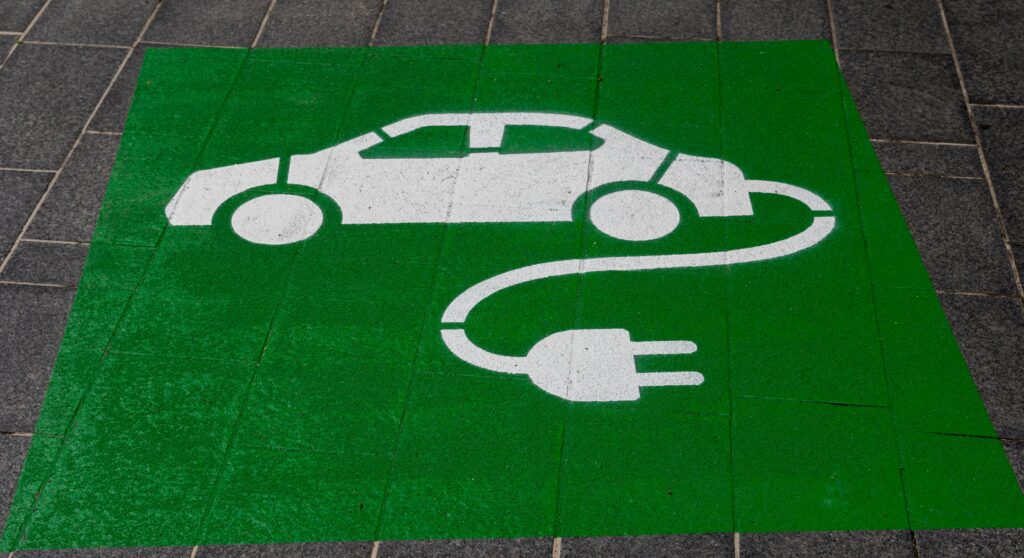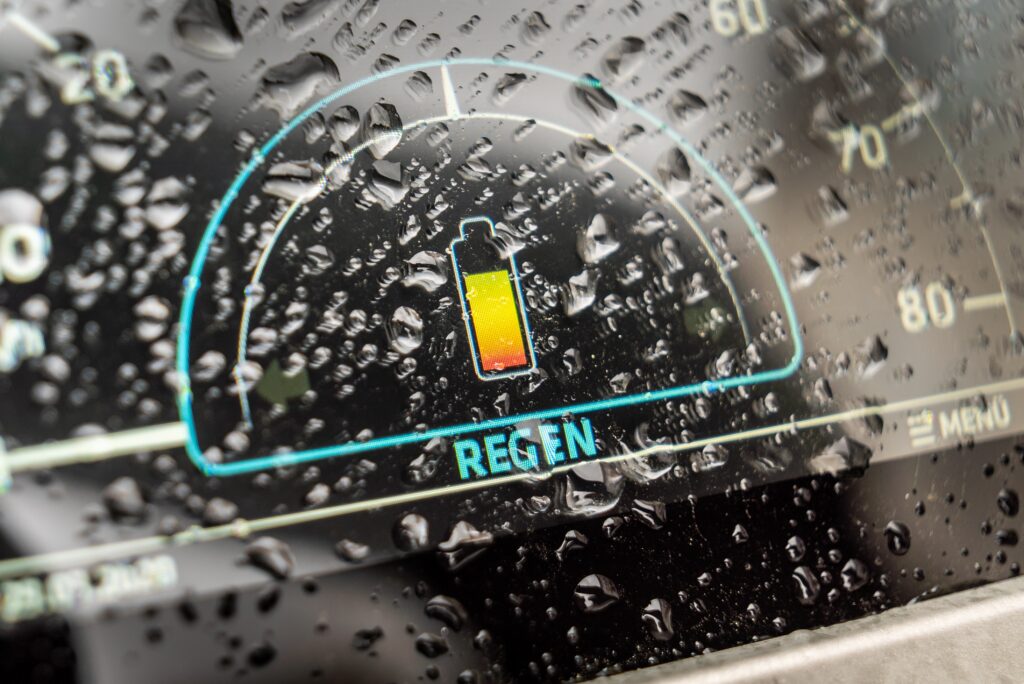Introduction
The surge in electric vehicle (EV) adoption is more than just a trend—it’s a glimpse into a future where transportation is electrified and deeply rooted in Data Analytics. At this intersection stands EV Analytics, a field that is reshaping the landscape of transportation through its fusion of innovative technology, enhanced user experience, and commitment to sustainability. This article aims to unfold the multifaceted role of analytics in the burgeoning world of electric vehicles.
In this transformative journey, understanding EV Performance Metrics through Data Analytics is critical. EV Analytics goes beyond simple data collection; it provides deep insights that are revolutionizing vehicle design, enriching customer interactions, and promoting eco-friendly practices. From the precision of Battery Health Monitoring to the insights from Charging Behavior Statistics, this analytical approach is redefining our relationship with transportation.
The integration of Data Analytics in assessing Electric Vehicle Data Analysis and EV Usage Patterns is pivotal in enhancing the infrastructure and efficiency of these vehicles. As we steer toward an environmentally conscious future, the insights from Sustainable Transportation Analytics and EV Range Optimization, powered by Data Analytics, are not merely incremental—they are revolutionary.
This journey, driven by data, with EV Analytics and Data Analytics at its core, is not just advancing technology but is also reshaping the very fabric of mobility and environmental stewardship.

Battery Performance
The Heart of EV Analytics
Battery performance is a cornerstone in the world of electric vehicles (EVs), serving as a critical determinant of their efficiency, reliability, and overall appeal. At the core of optimizing this performance lies EV Analytics, which leverages Data Analytics to transform raw data into actionable insights.
1. Understanding Battery Health:
The longevity and efficiency of an EV (Electric Vehicle) largely depend on its battery health. Using advanced Data Analytics, manufacturers and engineers can monitor various parameters like State of Charge (SoC), State of Health (SoH), temperature, voltage, and current. This monitoring helps in predicting battery lifespan, enhancing safety features, and improving design for future models.
2. Optimizing Usage Patterns and Charging Cycles:
EV Analytics plays a pivotal role in analyzing how EVs are used and charged. By scrutinizing data on charging frequency, duration, and energy consumption patterns, analytics can inform better battery management systems (BMS). This leads to more efficient charging strategies, ultimately extending battery life and performance.
3. Predictive Maintenance and Fault Detection:
Through Data Analytics, potential issues such as battery degradation or malfunction can be identified before they become critical. This predictive approach to maintenance ensures lower downtimes and higher reliability, enhancing the user experience and trust in EV technology.
4. Enhancing Range and Efficiency:
One of the primary concerns for EV (Electric Vehicle) users is range anxiety. By analyzing driving patterns and environmental factors, EV Analytics can optimize energy consumption, thereby maximizing the vehicle’s range. This involves tweaking software algorithms that control battery usage based on real-time data.
5. Sustainable Practices and Recycling:
Beyond the operational life of EV batteries, Data Analytics is crucial in determining the most efficient ways to recycle and repurpose them. This aspect ties directly into the broader goal of sustainability within the EV sector.
6. Integration with Smart Charging Infrastructure:
As part of a broader Electric Car Charging Infrastructure Analysis, understanding battery performance helps in optimizing the interaction between EVs and charging networks. This includes smart charging solutions that consider grid capacity and renewable energy availability.

Charging Infrastructure
Energizing the Network
The development of a robust charging infrastructure is a linchpin in the widespread adoption of electric vehicles (EVs). It’s where EV Analytics and Data Analytics come into play, not just to meet current demands but also to anticipate and shape future ones.
1. Strategic Placement of Charging Stations:
One of the first puzzles to solve in building a charging network is finding the right spots for the stations. This task goes beyond mere guesswork – it involves a thorough analysis of geographical data, traffic flow, and proximity to frequented destinations. Using Data Analytics, decision-makers can pinpoint locations that are not just accessible but also convenient for EV drivers.
2. Understanding Demand and Planning Capacity:
It’s crucial to know when and where drivers are likely to charge their vehicles. This is where EV Analytics shines, enabling forecasts of demand and helping to ensure that the supply of charging points grows in tandem with the number of EVs on the road. Proper planning here is key to avoiding long waits and ensuring a smooth charging experience for everyone.
3. Smart Grid Integration:
As the number of EVs increases, so does the strain on the electrical grid. The role of EV Analytics in this is to help balance this load. By promoting smart charging practices – where charging is timed to match grid capacity and availability of renewable energy – we can make the entire system more efficient and sustainable.
4. Analyzing User Behavior:
It is invaluable to understand how drivers use charging stations (how often they charge, how long they stay, what times they prefer). Insights from EV Analytics can help enhance the user experience, perhaps by improving the amenities at charging stations or introducing flexible pricing models to manage demand better.
5. Green Charging Solutions:
Integrating renewable energy sources like solar and wind power into the charging network is becoming increasingly important. Here, EV Analytics can guide the way, helping to create a network that’s not only efficient but also sustainable.
6. Navigating Economic and Policy Landscapes:
Building a charging network isn’t just about the technical aspects; it’s also about navigating the economic and regulatory landscapes. Data Analytics can offer insights into financial impacts, guide incentive strategies, and help shape the policies that will support the growth of EV charging infrastructures.

Driving Efficiency
Understanding User Behavior
In the realm of electric vehicles (EVs), driving efficiency goes beyond the mechanical and enters the domain of user behavior. Here, EV Analytics and Data Analytics play a crucial role in deciphering how drivers interact with their vehicles, which in turn shapes vehicle design and functionality.
1. Analyzing Driving Patterns:
The way individuals drive their EVs can significantly impact energy consumption and efficiency. By harnessing Data Analytics, manufacturers can study driving patterns, such as acceleration habits, braking frequency, and average speeds. This data not only helps in optimizing vehicle performance but also in educating drivers about more energy-efficient driving practices.
2. Customizing Vehicle Features:
Understanding user behavior allows for the customization of vehicle features to suit different driving styles. For instance, EV Analytics can inform the development of smart, adaptive systems that adjust energy use based on individual driving habits, enhancing both efficiency and the driving experience.
3. Improving Battery Management:
Driver behavior has a direct influence on battery life and efficiency. Through EV Analytics, insights into how drivers charge their vehicles – frequency, duration, and preferred times – can be used to refine battery management systems. This ensures more effective charging cycles and prolongs battery health.
4. Influencing Design and Development:
Data on user behavior is invaluable in the ongoing design and development of EVs. This includes everything from the ergonomic aspects of the vehicle to the user interface of onboard systems. Data Analytics helps in tailoring these elements to meet the needs and preferences of drivers, thereby enhancing user satisfaction.
5. Promoting Sustainable Driving Practices:
Beyond vehicle design, understanding driver behavior is key to promoting sustainable driving practices. By analyzing data on energy consumption patterns, EV Analytics can help in developing educational programs and incentives that encourage drivers to adopt more eco-friendly habits.
6. Enhancing Safety Features:
Safety is paramount in vehicle design. Insights from driver behavior can inform the development of advanced safety features and driver-assist technologies, making EVs not only more efficient but also safer.
Predictive Maintenance
Averting Downtime
In the rapidly evolving landscape of electric vehicles (EVs), predictive maintenance stands as a key innovation, driven by EV Analytics and Data Analytics. This proactive approach is all about using data to anticipate and resolve potential vehicle issues before they escalate, thereby minimizing downtime and enhancing reliability.
1. Data-Driven Fault Detection:
The core of predictive maintenance lies in its ability to detect potential faults before they become major issues. By continuously monitoring vehicle data, such as battery health, motor performance, and electronic systems, EV Analytics can identify anomalies that might indicate a problem. This early detection is crucial in preventing breakdowns and extending the lifespan of the vehicle.
2. Enhancing Vehicle Reliability:
Reliability is a major factor for EV owners. Predictive maintenance, powered by Data Analytics, ensures that vehicles are serviced only when necessary, based on actual vehicle condition rather than preset service intervals. This not only saves time and money for owners but also boosts their confidence in the reliability of their EVs.
3. Optimizing Maintenance Schedules:
Predictive maintenance uses data trends and patterns to optimize maintenance schedules. By understanding each vehicle’s unique usage pattern, EV Analytics can predict when parts are likely to fail or need servicing, allowing for better planning and scheduling of maintenance work, and thereby reducing unexpected downtime.
4. Improving Safety:
Beyond efficiency and convenience, predictive maintenance plays a crucial role in ensuring safety. By preemptively addressing potential issues, it reduces the likelihood of accidents caused by vehicle malfunctions, making EVs safer for both drivers and pedestrians.
5. Cost-Effective Operations:
From a manufacturer’s and owner’s perspective, predictive maintenance is cost-effective. It reduces the frequency of unnecessary maintenance, lowers repair costs by addressing issues early, and prolongs the overall health and performance of the vehicle.
6. Leveraging IoT and Big Data:
The implementation of predictive maintenance is largely reliant on the Internet of Things (IoT) and big data. Sensors embedded in EVs generate a continuous stream of data, which, when analyzed through Data Analytics, provide valuable insights for predictive maintenance.
The Autonomous Frontier
Data at the Wheel
As we venture into the era of autonomous electric vehicles (EVs), it’s the intricate dance of EV Analytics and Data Analytics that’s taking the driver’s seat. This exciting frontier is not just about the vehicles themselves but about how they learn, adapt, and make decisions.
1. Navigating with Sensor Data:
Picture a vehicle bristling with sensors, cameras, and radars, each collecting a continuous stream of data. This is where Data Analytics shines, turning this data into real-time decisions, and guiding the EV safely through traffic and around obstacles. It’s like having a super-smart co-pilot that never takes a break.
2. Learning from the Road:
Autonomous EVs aren’t just following pre-set rules; they’re learning from every mile they travel. Thanks to machine learning, they get better at recognizing patterns, predicting road conditions, and even anticipating other drivers’ actions. This ongoing learning process, powered by EV Analytics, is what makes these vehicles smarter over time.
3. Safety as a Priority:
When we talk about autonomous EVs, safety isn’t just a feature; it’s the foundation. Using Data Analytics, these vehicles continuously monitor their health, predict maintenance needs, and ensure every system is functioning perfectly. It’s like having a guardian angel who’s always looking out for the car and its passengers.
4. Adapting to the World:
Every road, every city, every weather condition is different. Autonomous EVs use EV Analytics to understand and adapt to these varying conditions. They analyze traffic patterns, weather data, and road types to make the best driving decisions, whether it’s a sunny day in the suburbs or a rainy night in the city.
5. Efficient Every Mile:
Managing energy efficiently is crucial for EVs, especially autonomous ones. They use Data Analytics to optimize routes, adjust driving patterns, and save energy, ensuring they can go the extra mile, quite literally, on every charge.
6. Respecting Privacy and Ethics:
In a world where cars are collecting mountains of data, respecting privacy and ethical considerations is paramount. Ensuring that this data is used responsibly and that individual privacy is safeguarded is a critical aspect of EV Analytics in this new age of autonomy.
Smart Grid Compatibility
Balancing the Load
Think of your electric vehicle (EV) as part of a larger community, where every car and every power line is in sync. This is the essence of Smart Grid Compatibility – a concept where EV Analytics and Data Analytics play a crucial role in making our energy use efficient and coordinated.
1. Charging in Harmony with the Grid:
Charging your EV shouldn’t be a guessing game. With EV Analytics, it becomes an intuitive process. The idea is to charge when it makes the most sense for the grid and you. This might be when electricity is cheaper or when renewable sources like wind and solar are powering the grid. It’s like finding the perfect rhythm in a dance between your car and the energy network.
2. Your Car as a Team Player in Energy:
Here’s where it gets really interesting. Your EV can be more than a vehicle; it can contribute energy back to the grid when it’s needed most. This Vehicle-to-Grid (V2G) technology turns your car into a valuable player in our shared energy game, helping to keep everything balanced and functioning smoothly.
3. A Responsive and Adaptive Grid:
A smart grid is like a clever octopus, adjusting its many arms to balance energy distribution. With insights from EV Analytics, the grid can redistribute energy during peak times or store it for later use, making sure there’s enough to go around without overloading the system.
4. Syncing with Nature’s Power:
We’re harnessing more energy from the sun and wind than ever before, but these sources aren’t always consistent. Your EV can help level out these natural fluctuations. By charging your car at times when renewable energy is plentiful, you’re supporting a greener grid.
5. A Health Check for the Grid:
Just like people, the energy grid needs regular health checks. Data Analytics acts as a physician for the grid, continuously monitoring its condition, predicting future needs, and ensuring its long-term health and reliability.
6. Shaping the Energy Future:
Decisions made today affect how we’ll use energy tomorrow. Data Analytics provides the insights needed for smart decision-making, helping to design a future where EVs and the energy grid work together in seamless unity.
Market Insights
Steering Strategy
In the electric vehicle (EV) world, knowing your market is as crucial as building a top-notch car. This is where Market Insights play a pivotal role, acting as a roadmap for companies and policymakers in the EV industry. It’s an area where EV Analytics and Data Analytics are not just technical jargon but essential tools for strategic decision-making.
1. Decoding Consumer Desires:
It’s like being a detective in the world of EVs. Companies are constantly trying to figure out what features make consumers tick. Do they want longer battery life, faster charging, or more affordable options? Market Insights help decode these preferences, enabling companies to design EVs that resonate with buyers.
2. Spotting Trends:
The EV market is always on the move, with new trends popping up regularly. EV Analytics help businesses stay ahead by identifying these trends early. It’s like having a crystal ball that shows what customers might want next, whether it’s advanced tech features or eco-friendly materials.
3. Eye on the Competition:
Understanding what other players in the EV market are doing is vital. It’s about keeping an eye on the competition – what they’re good at and where they might be lacking. Market Insights provides this competitive intelligence, helping companies strategize their next move.
4. Making Smart Investments:
Every business decision, especially about where to invest, is crucial. Market Insights guide these decisions, showing which markets are growing and which innovations could pay off. It’s about investing not just with money, but with insight and foresight.
5. Navigating Regulations:
The EV market isn’t just about innovation; it’s also about navigating a web of regulations. Data Analytics helps companies stay compliant and even anticipate future regulatory changes. It’s like having a GPS for navigating the complex road of laws and standards.
6. Adapting to Market Shifts:
The only constant in the EV market is change. Economic factors, new technologies, and global events can all turn the market upside down. Companies that use Market Insights to quickly adapt are more likely to succeed. It’s about being agile and ready for whatever comes next.
Conclusion
As we navigate the exciting world of electric vehicles (EVs), it’s evident that the heart of this evolution is deeply intertwined with Data Analytics. This journey, richly detailed in our exploration of battery performance, charging infrastructure, driving efficiency, predictive maintenance, autonomous technology, smart grid compatibility, and market insights, showcases how data is not just a background player but the main protagonist in the story of modern transportation.
In every aspect, from enhancing the battery health of an EV to optimizing the charging behavior, and from tailoring vehicles to driver usage patterns to integrating them into smart grids, Data Analytics and EV Analytics have proven to be indispensable. They don’t just analyze; they transform, innovate, and lead the charge toward a more efficient, user-friendly, and sustainable future.

The significance of EV Analytics in fostering a sustainable and efficient future is a consistent theme that resonates throughout our discussion. Whether it’s through improving the range and efficiency of EVs, ensuring their safe operation, or harmonizing their interaction with renewable energy sources, the insights provided by data are pivotal.
Ultimately, this isn’t just about cars. It’s about a revolution in how we view mobility and energy consumption. The future of transportation is steering towards being more connected, intelligent, and eco-conscious, driven by the power of Data Analytics. As the landscape of electric vehicles continues to expand and evolve, the role of analytics will only become more integral, guiding the industry towards a horizon that’s not only greener but smarter and data-empowered.


